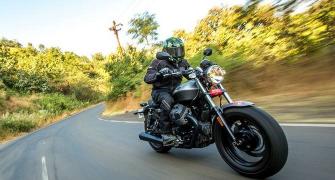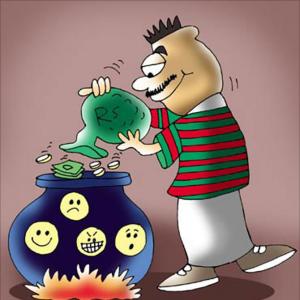
Two high-level railway safety commissions came down heavily on ICF coaches, recommending their replacement by LHBs, says Bibek Debroy.
ICF stands for the Integral Coach Factory in Chennai (Perambur). It was set up in 1952 and makes coaches for Indian Railways. Why the adjective ‘integral’? Stated simply, earlier coaches used to have a shell distinct from the under-frame. In ‘integral’ ICF, there is a single shell with the under-frame. If there is a head-on collision, this anti-telescopic design reduces fatalities.
In its time, ICF reduced a number of deaths. But the Swiss technology harks back to the 1950s. Initial suspensions didn’t allow speeds of more than 96 km/hour, other things like tracks permitting. But subsequent modified designs allowed even 140 km/hour on trains like Rajdhani and Shatabdi. Some 40 years down the line, in the mid-1990s, IR decided to review the technology used in coaches.
The objective was lighter, faster and safer coaches. That takes one to Linke-Hofmann-Busch, a German manufacturing company now part of Alstom. Initial trials of LHB, with imported coaches, on the Lucknow Shatabdi weren’t very successful. But after some redesigning, they were ready to be rolled out. The Railway Coach Factory in Kapurthala got the technology transfer agreement to manufacture these coaches.
LHB coaches can handle higher speeds (160 km/hour). They are lighter and less noisy. Air-conditioning is better. Since they are longer and wider, depending on the class of travel, the number of passengers they can carry is 10 per cent more. An LHB coach lasts for 35 years, the ICF coach for 25.
Most importantly, LHB coaches are safer. In 2012, there was a high-level safety review committee for IR, known as the Kakodkar Committee. Also in 2012, there was the Sam Pitroda Committee on Railway Modernisation. Both came down heavily on ICF coaches, recommending their replacement by LHB.
Several years ago, in 1998, there was the Khanna accident, which brought quality of rails into focus. Just before the Kakokdar Committee Report, in May 2010, there was the derailment of the Guwahati Rajdhani in Naugachia, Bihar.
This rake had LHB coaches and there wasn’t a single death. In July 2011, the Kalka Mail derailed near Fatehpur, Uttar Pradesh. This rake had ICF coaches. Seventy people died and more than 300 were injured. While deaths/injuries are functions of several factors, the ICF versus LHB contrast is obvious and the Kakokdar Committee also referred to simulation-cum-modelling studies establishing this. And now, we have the derailment in Pukhrayan, near Kanpur.
A hundred and fifty people died and more than 250 were injured. This is the Indore-Rajendra Nagar Express, numbered 19321. That’s an ICF rake and most casualties were in coaches S1 and S2, right in the middle of the train, when these telescoped into each other. This train has an average speed of 55 km/hour. But around Jhansi, it does touch 81 km/hour.
We don’t know what caused the accident. We will have to wait for the probe. Since 1993, more so after Khanna, there are better quality steel rails, mostly produced by the Steel Authority of India. Since Jhansi-Kanpur is a major line (doubling is planned), presumably, rails aren’t that old, though the first Jhansi-Kanpur line was constructed in 1889.
Other than rails, there are questions like inspection and maintenance of track, use of ultrasonic techniques, fittings, ballast, availability of spares, shortage of staff and a broader question of emphasis on safety.
However, Pukhrayan has raised the LHB issue again. In the 2015-16 Railway Budget speech, the railway minister said, “We also intend to progressively replace all coaches with LHB design coaches.” In the 2013-14 Railway Budget speech, the then railway minister mentioned “progressive induction of crash-worthy LHB coaches having anti-climb feature”.
Open-ended promises without timelines mean little. We finally seem to have some kind of timeline, 2020. That is, beyond 2020, ICF coaches will no longer be manufactured.
However, there is room for scepticism. First, LHB coaches cost more, say Rs 2-5 crore, against Rs 1.5 crore for ICF. Second, there is existing production capacity, in ICF, RCF and relatively new Modern Coach Factory in Rae Bareli. There is a vested interest in protecting this production base, particularly in Chennai, and the vendor base. MCF is new. When it gets going, it will manufacture 1,000 LHB coaches a year.
RCF does around 500 LHB coaches a year, with a total of 1,500. If it switches completely, 1,500 LHB. If ICF switches completely, by no means easy (it only does around 300 LHB now), another 1,000. At maximum capacity, that’s 3,500 LHB coaches per year. Today, the total number of coaches (excluding rail cars and EMUs) number around 50,000. LHBs number around 7,000.
That’s a backlog of 43,000 ICF coaches and more ICF coaches will continue to be produced till 2019. ICF cannot be spliced with LHB in the same rake. Nor will an ICF coach be junked ahead of its track life of 25 years. That’s the reason, after the Pukhrayan accident, IR announced better couplers for ICF coaches, so that they don’t climb atop one another. IR knows ICF coaches aren’t going away in a hurry.
When a Deen Dayalu coach is rolled out and attached to general class, the existing rake is ICF and so are the new Deen Dayalu coaches. We may be inching towards LHB, but we are also adding to the ICF backlog.
Bivek Debroy is a member of the National Institution for Transforming India Aayog.










